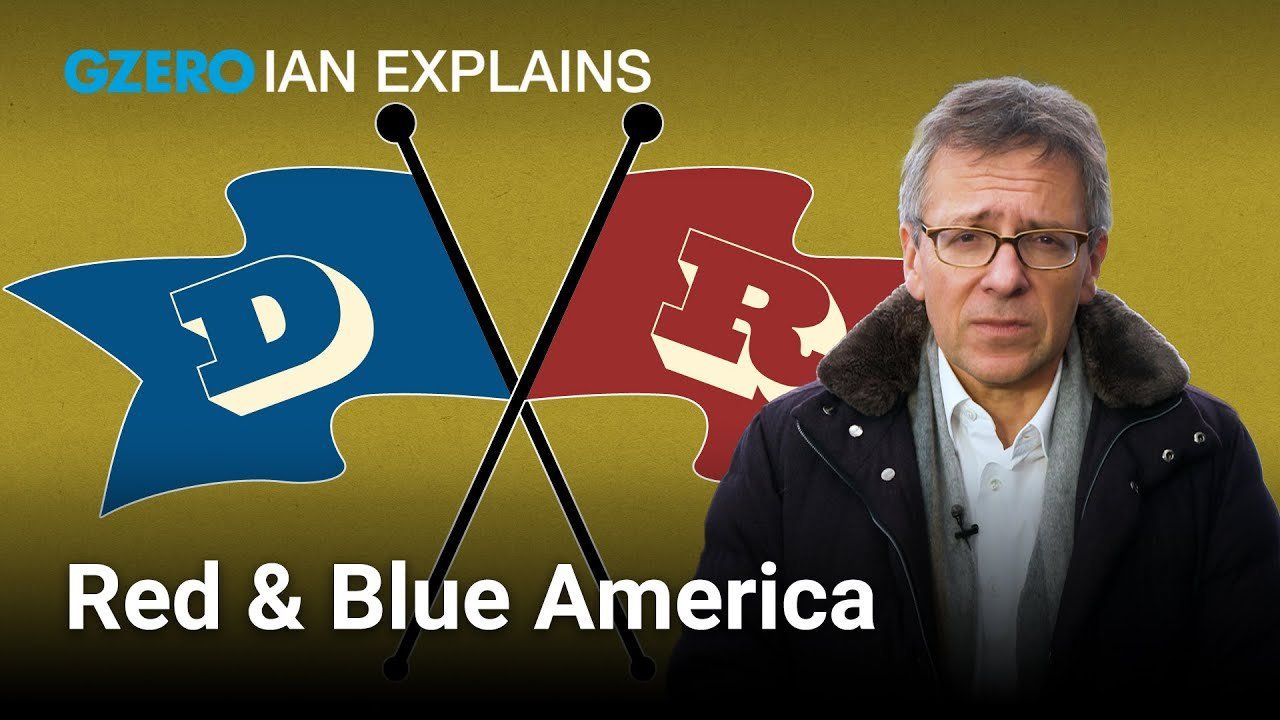
Do you live in a red state or a blue state? Until fairly recently, such a question would have been nonsensical in the US. Ian Bremmer rolls back the clock on GZERO World to take a look.
On November 4, 1980, NBC News became the first major network to call the presidential election for Ronald Reagan. What stands out about this clip is not the absolute drubbing that President Carter received, but those colors on that map. States that had gone for Reagan are blue, states yet to be decided are that sickly 1980s yellow, and lonely little Georgia, which native son Jimmy Carter had managed to hold on to, is red.
It wasn’t, in fact, until the contested 2000 election between then Vice President Al Gore and Texas Governor George W Bush that major news networks agreed on a standard red-state-Republican // blue state-Democrat map scheme. That’s right, one of the most iconic signifiers of Republican or Democrat identity—second only to the elephant and donkey—is a modern invention, and one borne out of confusion.
Al Gore’s legacy will forever be tied to his fateful decision to put the peaceful transfer of power over his personal ambitions. He was also acknowledging a shared reality, as unpalatable as it might have been for himself, where George W Bush would be the next president of Red and Blue states, alike.